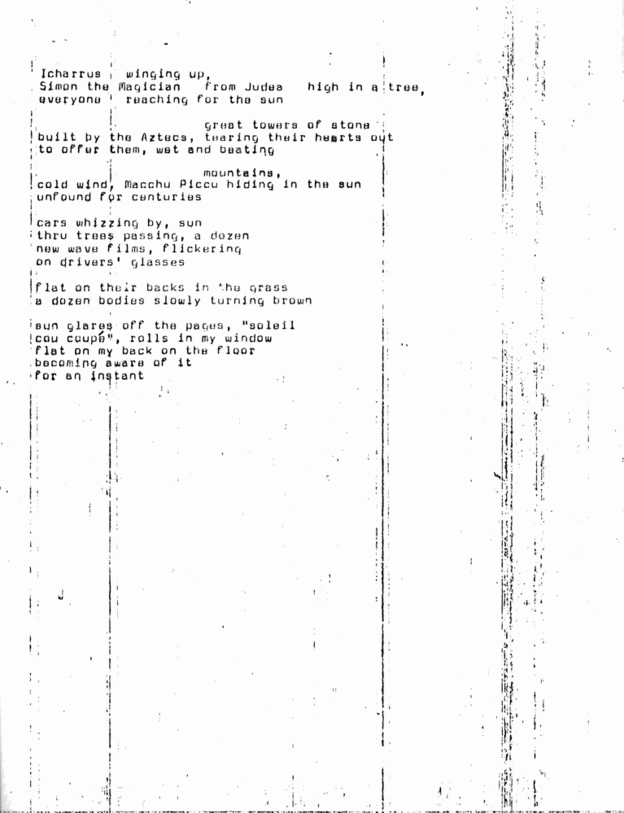Bright arrogance #12
Uncopiable copies and bpNichol' s machine translation

Willis Barnstone speaks disapprovingly of literal translation as like a “xerox machine.” This derogatory use of the word xerox in relation to translation is a little unfair, especially since the xerox is a much better metaphor for translation pushed to its creative extremes than is the more typical technological reference to the game of “telephone.” Xerox artists explored the unconscious or unadmitted noise of information transfer well before glitch artists and noise bands would aestheticize the (disc)ontents of digital duplication. And writers as diverse as bpNichol and W.G. Sebald mobilize the bad xerox explicitly to highlight the philosophical and aesthetic limits of translation.
bpNichol’s Translating Translating Apollinaire is a kind of laboratory of experimental translation techniques that take into account, among other things, the machinic, non-lexical components of translation — both typewriter and xerox become not mere allies for distributing the translation, but become its ostensible subject, as Apollinaire starts to fade into the distance through various iterations and recombinations (inviting spinoffs such as, at least, two versions of Translating Translating Translating Apollinaire by other authors, a mysterious TranslatingTranslating Translating translating Apollinaire, hosted at the spammily named onefreepublicrelations.com, and TTA 29 Continued an online tribute edited by Karl Young). While many of the translation methods of the original TTA are what Nichol and McCaffery would categorize as “geomantic”—a kind of positional or repositional feng-shui familiar to concrete poets — Nichol’s addendum-extension of TTA, Sharp Facts, explores what Nichol and McCaffery call the post-semiotic potential of machine translation.
Sharp Facts takes the already highly experimental and permutative TTA and runs it through a Sharpfax copier until the lexical properties of the poem disappear; the granular markings left after the nth-generation copy has degenerated well past legibility are all that remain. In Lori Emerson’s account of Sharp Facts, these Apollinaires are “by far the dirtiest, most illegible of Nichol’s works.” If we earlier spoke of the experimental translator’s attempt to get past semantic equivalence to Lacan’s “real,” this post-semiotics of the copier, in the fine-grained noise of its (mal)functioning, gets at a certain real, but of the machine — its signature, its electostatic fact. In effect, Nichol takes Jerome Rothenberg’s ethnographic notion of “total translation” into the cultural matrix of office technology. By exploring what Nichol calls “copying machine disintegrative tendencies” as a mode of translation “the machine is the message. The text itself ultimately disappears.”
The paradox of this type of work is that it goes in (at least) two directions. . . . While exploring the infinite permutationality (or multidimensionality) of translation, it also asserts the existential density of each individual instantiation become suddenly originary. Each copy of Nichol’s Sharp Facts is uncopyable. Like his typewriter poems, which can only exist in the combinations that are set on the page (by the agency of a particular machine), these xerox artifacts are untranslatable. They take media specificity to its logical (or absurd) extreme, revealing that in the dense web of daily communication systems, there is something that remains stuck to the drum, the accident of a thing once tried, a trace of the ephemeral conjunction between machine and its double.
~NEXT WEEK: ANOTHER AENEID??!!~
Bright arrogance